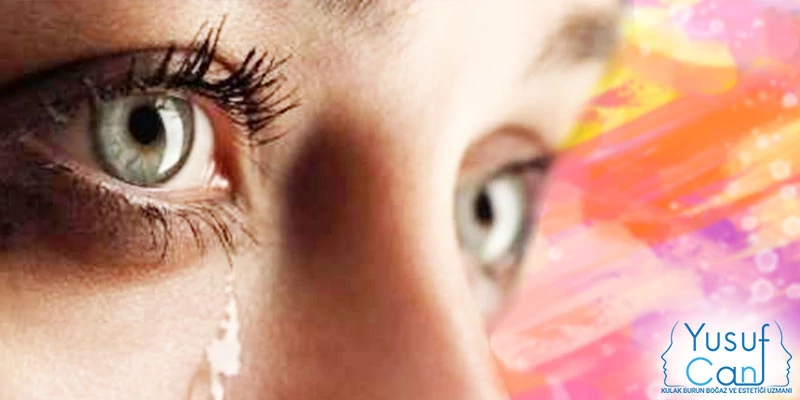
The treatment of catarrh due to lacrimal sac and tear duct blockages is surgical. For many years, these operations have been performed by ophthalmologists by inserting the tear sac located in the area where the eye joins the nose through the skin in the form of mouth to the nose and are still being performed.
With the development of endoscopic surgery in the field of otolaryngology, endoscopic lacrimal sac surgeries have developed as an alternative to this classical surgical method, which is performed externally due to the comfortable visibility of the inside of the nose and brings with it a number of problems. In endoscopic surgeries, the entire procedure is performed through the nose without any external scars, and the connection of the lacrimal sac to the nose is ensured.
When the drainage system that transmits the tear to the nose, which we call the lacrimal system, is blocked for any reason, a person complains of tearfulness.
There are various reasons such as the formation of stones, adhesions due to any infection in the tear ducts.
Don't live in the eye. Sometimes it can also be two-sided. Swelling and redness in the Decollete between the eyes and nose. Excessive formation of burrs and pus in the morning, blurred vision due to constant discharge, burning, stinging and discomfort in the eye....
Sometimes, congenitally, the tear duct may never have been opened to the nose or formed, in this case, these complaints occur from birth, but the same disease may also occur in children due to reasons such as infection and the formation of stones. However, our treatment approach in children shows differences.
Watering in the eyes can be so much that it can interfere with a person's social activities. Inflammatory discharge from the eye may also occur as a result of chronic infection of the lacrimal sac. The level of congestion has been determined by various diagnostic methods after endoscopic techniques in a period of approximately 20 minutes under regional or general anesthesia is being opened this bottleneck, and this intervention in the aftermath of bruising and swelling after surgery, other conventional surgical techniques are common around the eyes, pain and healing. Due to all these advantages, endoscopic lacrimal sac surgeries are preferred to classical surgery and are becoming widespread every day.